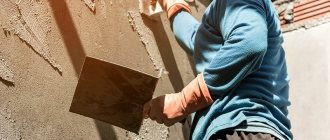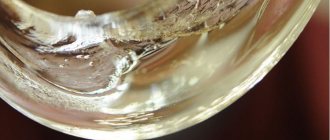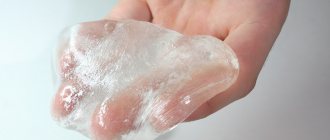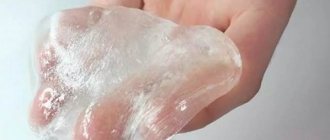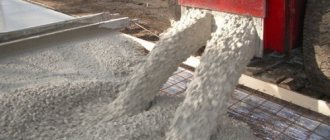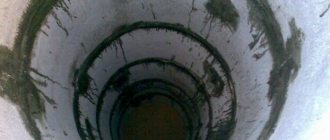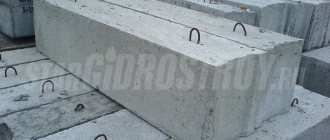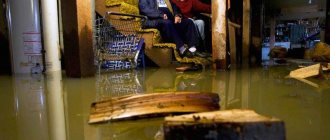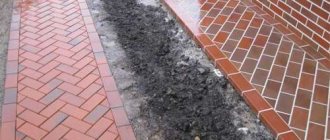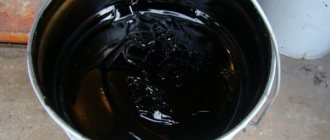Water wears away stones. Builders are convinced of the validity of this wisdom every working day. Moisture can destroy even the strongest reinforced concrete. To protect structures and extend their service life, humanity came up with a brilliant invention - waterproofing materials. They all create a protective film on the surface that prevents exposure to water. There is a decent range of such compositions, and liquid glass is considered one of the most popular. It is universal, inexpensive and easy to use. We will figure out how to use liquid glass for waterproofing concrete, foundations, and swimming pools, how to apply it and why it is considered so universal.
No. 1. What is liquid glass?
Liquid glass is the same silicate glue. Its basis is an aqueous alkaline solution of sodium or potassium silicate. Lithium silicate is used much less frequently - this material is used in electrode coating. In Russia, polishes and protective compounds for cars are often called liquid glass, which is not entirely true. They have a completely different composition, and the confusion is caused by the fact that automobile products in Asian countries are called “glass coat,” literally “glass coating,” but not liquid glass.
Liquid glass is obtained by firing quartz sand or soda. A method of treating silica with alkali is also used. When solidified, a viscous homogeneous substance becomes solid and does not allow air or water to pass through. While the composition has not dried, it easily penetrates into the pores of the base, which is what its protective effect is based on. Liquid glass perfectly protects against moisture, plays the role of an antiseptic, hardener, acid protectant and increases fire resistance.
Types of waterproofing
Penetrating waterproofing - penetrates into pores to a depth of 20 cm, reliably filling even microcracks.
Coating waterproofing is mastics and bitumen-containing compounds used to protect walls from capillary moisture and groundwater.
Pasted waterproofing - used to quickly create a waterproof layer on horizontal and vertical surfaces, wall joints, to protect seams and cracks. Not applicable everywhere.
Painting – used to protect against capillary moisture. Painted waterproofing is environmentally friendly, economical, permeable to air and water vapor.
Powder – dry powder is diluted with water before use. Easy to use, effective, but easily susceptible to mechanical damage.
No. 2. The main pros and cons of liquid glass
Liquid glass is very often used for waterproofing work. This is due to a number of its advantages :
- excellent water-repellent properties, the film is solid, so moisture has no access to the material;
- liquid glass penetrates perfectly into pores and cracks and has high adhesion to the base;
- low consumption, especially when adding a substance to cement mortar;
- low price compared to other waterproofing materials;
- the substance can be used at high humidity;
- relatively high durability. Liquid glass will last at least 5 years, and if it is coated with paint, then much longer. Without additional protection, it is capable of gradually self-destructing;
- Liquid glass makes the material resistant to fire, acids, alkalis, mold, and increases the strength of the base.
However, this material also has its disadvantages :
- limited scope of application. The material is compatible only with concrete and wood. You cannot apply such waterproofing to a brick - it will destroy the material. When they talk about the versatility of liquid glass, they mean that the composition can be used to create coating waterproofing and to add to concrete, and its different concentrations in the solution allow one to obtain different properties;
- Liquid glass, like regular glass, is a little fragile and becomes so when it hardens. To prevent the layer from being damaged, it is additionally protected from above with another material;
- It is almost impossible to apply a finishing finish on top of liquid glass - paints and varnishes do not stick to it at all;
- it is very important to maintain the correct proportions when adding liquid glass to the cement mortar, otherwise it may harden too quickly;
- Although the installation process cannot be called specific, and special tools are not required, certain skills will still be needed. You can do all the work yourself only if you have experience in waterproofing. You will have to act very quickly, since liquid glass sets almost instantly.
In one form or another, liquid glass has been used in construction for more than 200 years . During this time, humanity has managed to come up with other waterproofing materials, but liquid glass still withstands competition.
Liquid glass is practically not used as an independent waterproofing material - only in conjunction with other materials , but only thanks to it is it possible to achieve excellent results and completely protect concrete and wood from moisture.
Characteristic features of liquid glass
Visually, liquid glass is a translucent jelly-like substance. As for the chemical side of the issue, it is a water-based mixture of silicates - Na and K. The structure of the mixture includes nanocrystals that are able to penetrate deep into the concrete, increasing in size and solidifying there. The versatility of this material and its quality as a barrier against moisture penetration is due to a number of its properties:
- The applied layer is characterized by a water-repellent effect.
- Liquid glass is an excellent antiseptic.
- Building materials coated with liquid glass generate less dust and do not accumulate static electricity.
- When dried, the insulator gives the concrete base greater strength.
- The material is non-flammable and resistant to acids and aggressive chemical compounds.
- Has a high degree of adhesion.
- Has a small area consumption.
- Low cost compared to modern waterproofing materials.
- Can be applied to a damp base.
- Long service life of the protective layer.
Liquid glass is applicable in completely different areas, including household purposes:
- the use of liquid glass for concrete waterproofing;
- application to concrete surfaces indoors as a waterproof layer;
- waterproofing of structures operated in humid environments;
- insulation of wooden structures;
- creation of a fire-resistant layer;
- as an antiseptic;
- when working with plumbing, etc.
It is also worth remembering that the use of liquid glass has some limitations. Firstly, liquid glass is compatible only with concrete and wood. Applying the composition to brick is strictly prohibited, since, as it expands, it will contribute to the destruction of the masonry. Secondly, when used with other materials, the proportions must be maintained, otherwise it will not be possible to waterproof the surface.
No. 3. Areas of application of liquid glass
Essentially, liquid glass can be used in three main ways:
- the composition is applied to the concrete surface, dries and forms a moisture-resistant film, clogging all pores. Often the protection is applied in several layers;
- the composition is added to the concrete solution. A concrete structure created in this way receives improved waterproofing properties, but at the same time hardens much faster;
- as an additive for the production of different grades of concrete.
To convince you of the versatility and practicality of this waterproofing material, we present only the most common areas where liquid glass is used:
- covering the foundation, walls, ceilings and floors in basements;
- waterproofing of swimming pools and wells;
- waterproofing wood;
- added to concrete to improve water-repellent properties;
- protection of tree trunks after cutting;
- gluing different materials;
- to combat mold;
- for protection against corrosion;
- to protect seams between building materials;
- much less frequently, the composition is used to remove dust from concrete, and also as a quick-drying substance. It is also rarely used to create bactericidal grouts and as a sealant.
Types of impregnating waterproofing
Impregnated waterproofing, due to its ease of implementation, has still not lost its popularity. Some materials in this group remained almost unchanged, for example, drying oil, which is boiled vegetable oil, and tar.
In modern construction, a number of new highly effective impregnations are used: based on oligomeric, acrylic, silicone, epoxy and other synthetic resins.
- As a cheaper alternative to oil impregnations, oligomeric waterproofing was developed. This impregnation is produced from oil refining products and is a material similar in composition and properties to machine oil and diesel fuel. The protective effect of oligomeric waterproofing is based on the non-wetting properties of carbohydrates. The main difficulty in using such waterproofing is the need to apply it to dry surfaces, which is impossible in damp rooms that are already in use. In addition, these impregnations contain organic solvents, which smell for some time.
Insulating emulsions were developed to work on damp walls and to remove the smell of organic solvents. In such a waterproofing composition, non-wettable organic particles are distributed in small drops in an aqueous solution. When water hits a wet concrete structure, it carries oily droplets deep into the mass. Inside the concrete element, organic particles clump together, making the concrete waterproof. The most common emulsions are acrylics and silicones.
- acrylic impregnations
“impregnations”. Part of the polymer in the form of a film remains on the surface. More effective are impregnations based on modified acrylic - acrylic styrenes, methacrylics, acrylic butadienes and other copolymers. This group includes the compositions “Polyrem VD-1624”, “Hard”, “Elastic”, “Folbit 800”, “Ceresit ST 17”. Close relatives of such impregnations are acrylic and polymer water repellents, which are characterized by deeper penetration into the concrete and a less pronounced film on the surface. - The group of silicone impregnations
naturally includes silanes, siliconates, siloxanes and other silicon-containing polymers. Despite the differences in the structure of these compositions, they share similar properties. Silicones easily copolymerize with silicates - sand, cement, crushed stone, glass, as well as varnishes, paints and plastic materials. The following silicone impregnations are available on the market: “Aquasil”, “AS-10”, “Polyrem VD-1915”, “Ceresit ST 17”. These compositions are recommended for surface application.
The main advantage of silicone impregnations is the ability to form a single whole with the mineral elements of the building, by covering the pores, cracks and capillaries of concrete from the inside with a continuous film.
Penetrating waterproofing: types and main characteristics
A new type of protection of concrete structures from moisture is waterproofing for concrete with penetrating action. Impregnation can be a colorless liquid, paste or powder diluted with water, but their principle of operation is similar. Water-soluble waterproofing elements penetrate concrete to a depth of 100-300 mm and enter into a chemical reaction with lime, which is always present inside concrete, and other substances. The products formed as a result of this interaction have low solubility in water, and therefore begin to quickly crystallize from solution. In this case, crystals of a special type are formed - bunches or brushes of needles, with their tips directed into the pores. The force of surface tension prevents the liquid from spreading, seeping between the needles and wetting them.
Crystals occupying a small part of the pore make it impenetrable to moisture penetration, but do not at all interfere with the movement of steam. This selectivity of waterproofing action leads to rapid drying of the concrete structure and the formation of resistance to subsequent wetting.
Representatives of penetrating waterproofing: “Viatron”, “Gidrozit BS”, “Gidrotex”, “Carat-P”, “Osmosil”, “Penetron”, “Slurry”, “Ceresit CR 90”. Some of these materials combine the characteristics of impregnating and penetrating waterproofing.
The combination of Penetron and Penecrit materials is used to prevent water filtration through cracks, crevices, joints, interfaces and abutments. These waterproofing compounds include: cement, quartz sand with a certain granule size, and chemically active additives.
In this video you can see how to apply waterproofing for Penetron concrete with your own hands, and understand the principle of its operation (and the actions of similar additives):
Properties of coating waterproofing
At first glance, impregnating and coating waterproofing are similar: they are applied to the surface of a concrete element and penetrate into the body of the material. Their difference lies in their mechanism of action. The role of impregnating waterproofing is to hydrophobize the surface of pores, cracks and capillaries. That is, impregnation works in the volume of the concrete element.
The coating composition, on the contrary, works on the surface, penetrating the material just enough to ensure reliable adhesion to the concrete. This thin layer bears a lot of responsibility, so the requirements for it are very stringent. These requirements increase if the waterproofing layer is applied on the side facing the water pressure. In this case, the water does not press the waterproofing against the wall, but, on the contrary, tears it off. Therefore, waterproofing must have the following characteristics:
- high adhesion to the protected layer;
- waterproof and water-resistant;
- crack resistance and elasticity.
Many requirements, sometimes contradictory, for insulating materials of this group have led to the emergence of many specific types, differing in the degree of modification, phase composition and type of binder.
Difference between coating waterproofing based on binder
Based on the type of binder, coating waterproofing is divided into mineral and organic.
- Waterproofing compositions based on cement binder are produced and supplied to the consumer in dry form in bags or plastic buckets. Dry mixtures are brought into working condition at the construction site by mixing them with water to form a paste. Work must be carried out immediately after preparing the mixture, before it hardens. Coating waterproofing materials based on mineral binder include “Polyrem SGi-605”, “Stromix - protection from dampness”, “Ceresit CR-65”, “Elastoliqvid”, “Seal Coat”. To enhance waterproofing properties, a polymer latex dispersion is used. In this case, the waterproofing is called two-component. It goes on sale as a set of two units: dry powder in a bag or bucket and dispersion in a bucket or canister. The expected effect is achieved only by combining both components.
To eliminate emergency situations, special compositions are used, the main feature of which is rapid setting in contact with water, and during the hardening process the composition expands. Such compositions are called filling compounds; their family includes: “Hydrotex B”, “Lakhta - water plug”, “Polyrem SGi-631”, “Ceresit CX 5”, “Carat-Fix”.
- In the group of coating waterproofing with organic binders, the leader has been and remains bitumen-based mastics. To improve elasticity and increase adhesion to the base, synthetic rubbers and latexes are added to bitumen, which makes it possible to obtain modified mastics. These include “Ceresit CL 51” and “Ceresit CL 50”, which contain synthetic resins. Waterproofing “Asoflex-R2M-Boden” and “Hyper-Desmo” are made on the basis of polyurethane, “Germo-Butyl-2M-U” is made on butyl rubber.
Materials for roll waterproofing
Roll waterproofing is a bitumen-polymer binder applied to a fiberglass or non-woven polyester base. The upper surface of the waterproofing material is covered with a protective mineral coating, polymer film or sand, and the lower surface is covered with a polymer film.
Fiberglass bases have low elasticity and the ability to absorb significant tensile forces with small deformations. Polyester is a more elastic material and can elongate by almost 40% without breaking. Therefore, polyester-based roll waterproofing is used in structures where severe deformation is possible.
The base must be carefully prepared before applying the waterproofing layer, and primed before directly laying the material. The number of layers of roll waterproofing depends on the strength and type of water load.
The market offers Russian-made waterproofing materials - Steklobit, Tekhnoplast and imported products - geomembranes made of high and low pressure polyethylene from NAUE, self-adhesive waterproofing Ceresit BT 21, BT 12, BT 85, BT 85 R, BT 85 SR.
Additives for increasing the waterproofing of concrete
In addition to water-repellent materials applied to the surface of building structures, a number of special additives to concrete for waterproofing have been developed. Such compositions, introduced into the concrete mixture during its production, increase the water resistance of concrete. Additives of this group improve not only waterproofing, but also other properties of the material. Waterproofing additives for concrete are made from polymers that have the ability to grow in the concrete mixture, closing cracks and water tunnels formed during hardening of the material.
Technologies for using additives are determined by their type. Many dry mixtures for waterproofing are used in combination with other modifiers, for example, frost-resistant additives and plasticizers.
The ratio of dry composition and water is indicated in the instructions supplied by the additive manufacturers.
The introduction of waterproofing additives into the concrete mixture during its preparation allows you to avoid unnecessary costs for work to protect concrete and reinforced concrete structures from the destructive effects of moisture.
GD Star Rating
a WordPress rating system
Waterproofing materials for concrete, 4.0 out of 5 based on 20 ratings
Protecting concrete from moisture is an important and easy to implement procedure. For this purpose, many waterproofing and strengthening materials with different characteristics and properties are produced. However, in some cases, you can’t get by with just superficial protection—you need something more reliable. This task is best accomplished with a deep penetration impregnating composition designed specifically for concrete.
Impregnations with deeper penetration are in demand where surface waterproofing is unreliable or short-lived. For example, cement floors in public places experience severe abrasion loads. And if the water-repellent layer is not strong enough, it will quickly collapse and the concrete will be left without protection.
Another area of application for deep impregnation is very dense types of high-strength concrete. The pores inside such a material are so small that viscous compounds simply cannot penetrate deeper. But a more liquid impregnation of deep penetration has very small particles, 30-60 nm. Thanks to this, it easily seeps into the thickness of concrete, flowing into the smallest capillary pores and solidifying in them.
Almost all waterproofing impregnations, by compacting the structure of concrete, slightly strengthen the entire structure. So if you want to improve the performance of a very thick screed, you will need a solution that penetrates as deeply as possible.
For vertical concrete walls, too deep impregnation of water is not required, since excess moisture can only flow into surface pores. To block their path, a film-forming composition will be enough.
No. 4. Types of liquid glass
The basis of liquid glass, as mentioned earlier, can be potassium or sodium silicate. In principle, both compositions are very similar, but there are still some differences:
- potassium silicate is resistant to acids, has excellent adhesive properties and lacks the characteristic glass sheen;
- sodium silicate has the same high performance qualities, but it does not have the characteristic shine.
Liquid glass is sold in containers from 500 ml to 10 liters. Be sure to look for information about the composition and manufacturer. Also on the packaging there must be information that the material was produced in accordance with GOST 13078-81.
Less common, but granulated glass, which must be diluted with a certain amount of water before use according to the instructions.
No. 5. Methods of using liquid glass
It is clear that liquid glass is used for waterproofing, but it can be applied in different ways - it all depends on the goals:
- The coating method involves applying clean liquid glass to the surface. Typically sodium silicate is used. The method is suitable for coating substrates that are dusty, porous and friable. The insulation layer dries within 30-60 minutes, after which another layer can be applied. On top of liquid glass, you can use another waterproofing material, for example, roofing felt;
- the penetrating method has much in common with the coating method, but in this case liquid glass is mixed with water, and sometimes with a dry building mixture. The resulting composition can be used to treat hard-to-reach surfaces, but you will have to work very quickly;
- by adding liquid glass to concrete, a more durable and moisture-resistant material is obtained, but this technique deserves a separate section.
Penetrating concrete waterproofing
Cement-based waterproofing, although it was known 50 years ago, was not widely used then.
The principle of operation of penetrating waterproofing is that the chemical elements included in its composition, after hitting the surface of the wall, penetrate under the influence of physical forces into microcapillaries in the thickness of the concrete. The name of this method of waterproofing comes from the ability to penetrate the wall.
In capillaries, the active ingredients of the mixture interact with the substances that make up the concrete. Next, a kind of micro-plugs are formed that completely block the movement of liquid from the inside, but do not reduce the vapor permeability of the wall.
For a long time, synonymous with penetrating concrete waterproofing was the dry cement-based waterproofing mixture Penetron. This is due to the fact that Penetorone was the only such remedy for a long time. But today the construction market offers waterproofing mixtures from many other manufacturers.
The penetrating mixture for waterproofing is available in dry form. After mixing with water, apply to concrete using a wide brush with synthetic bristles. The solution should be mixed immediately before work and in an amount that can be used within 30 minutes.
Cement based waterproofing
No. 6. Liquid glass for concrete waterproofing
The popularity of liquid glass is associated precisely with its addition to concrete mortar. The essence of the method would seem to be clear, but to get a truly high-quality result, you need to know several nuances:
- Liquid glass cannot be added to the prepared liquid solution. First, prepare a dry mixture, and then dilute it with water, to which a certain part of liquid glass is added;
- the amount of liquid glass can vary widely - it all depends on your goals. Having chosen a specific recipe, it is very important to follow the specified proportions. The minimum content of liquid glass in concrete is 2% (this composition is used for waterproofing the foundation), the maximum is 25%;
- liquid glass improves the quality of the solution, but greatly affects the speed of its hardening. It is recommended to prepare the solution in small portions so that it does not harden while still in the container. For the same reason, many do not recommend using a concrete mixer.
If you add only 2-3% liquid glass to the solution, the concrete will begin to set within 45 minutes, and will completely harden after a day. This is a fairly popular proportion. When adding 5% liquid glass, the setting speed will be reduced to 30 minutes, and complete hardening will occur after 16 hours. For 8% these figures will be 15 minutes and 7 hours, and for 10% - 5 minutes and 4 hours, respectively. For mixing, use clean cold water and cement grades M300 and M400.
The mixing principle is as follows:
- take a container with clean water, add liquid glass there, mix;
- the solution is poured into a larger container and a dry cement-sand mixture is gradually introduced;
- quickly but thoroughly mix the mixture until smooth and get to work.
All work is carried out in special clothing and gloves.
Preparation of mortars with liquid glass
Manufacturing proportions
To obtain the expected effect from the use of silicate compounds, they must be properly prepared for work. For example, if you plan to cover the surface of a concrete floor with liquid glass, then it must be diluted with water in a ratio of 1:2. That is, 1 kg of glass will require two liters of water. The consumption of such a solution will be 250÷300 g/m².
Liquid glass is used for waterproofing concrete floors and plastered surfaces, on which the coating has lost its strength over the period of operation and has unevenness. The silicate solution will bind the structure of the material, give it strength, make the surface smoother, and also create antiseptic protection for it.
Adding liquid glass to the concrete solution gives the structure waterproofing qualities. In addition, this additive significantly accelerates the hardening process of concrete.
If liquid glass is added to concrete mortar, the proportions may vary depending on the area of its application. The content of the silicate composition can have different effects on the physical characteristics and hardening period of the solution. For concrete mortar reinforced with silicate additive, it is necessary to use cement grades M300 and M400.
If liquid glass is added to a cement-sand mortar in an amount of 2%!o(MISSING)t of the total mass, then the life of the solution will be 40 minutes. After which the mixture will begin to quickly harden. And complete drying will take 24 hours. If silicate glue makes up 10% of the total volume of cement, then hardening will begin much faster. Such proportions of components will ensure that the mixture begins to set within 5 minutes. Well, complete drying will be achieved in 4 hours. If you make a 1:1 solution, that is, use 1 kg of glue for 1 kg of cement, then hardening will occur within one or two minutes after mixing it. This approach is often used to quickly eliminate leaks caused by cracks.
Waterproofing the floor with liquid glass.
To waterproof the floors of bathrooms, basements, inspection pits, garages, as well as swimming pools, a solution of cement and liquid glass, made up in a ratio of 10:1, is used. When making a heat-resistant mixture for laying a furnace, the solution should consist of 1 part cement, 3 parts sand and 0.2 parts liquid glass. As a result of using this proportion, a dough-like plastic mixture should be obtained, which is convenient to work with when laying bricks. If it is necessary to prepare a solution for waterproofing a well, then take cement, sand and liquid glass in a ratio of 1:1:1. The mixture must be brought to the consistency of liquid sour cream with water. Refractory solutions consist of the same components, but taken in a ratio of 4:1.5:1.5. To fill voids and cracks in a concrete base or load-bearing structures, the solution is prepared from 3 parts cement, 1 part sand and 1 part liquid glass. To strengthen facade surfaces, a waterproof plaster mixture is made, consisting of 0.5 parts silicate mass, 1 part cement and 2.5 parts sand.
We recommend: How and with what to clean silicone sealant - instructions for action
Procedure for mixing the solution
It is not enough to know the proportions of the solution - you need to be able to make it correctly. To make the material homogeneous and plastic, you should follow some recommendations:
First of all, you should choose the proportions for making the solution, depending on the application. To work on mixing and applying a solution containing liquid glass, it is necessary to prepare special clothing. With the expectation that you wouldn’t mind throwing it away later. Washing silicate composition from fabric is a completely futile task. Next, you need to fill a suitable container with water. Its quantity depends on the volume of cement and sand that will be used for the solution. The next step is to pour liquid glass into the water and mix thoroughly until completely dissolved. A dry mixture consisting of sand and cement, taken in the required proportions, is mixed separately. After this, the cement-sand mixture is gradually poured into the aqueous silicate solution and mixed until smooth. It is better to carry out this process with a construction mixer or an electric drill, installing a special attachment on it. If the solution turns out to be too thick, you can carefully add a little water into it. The liquid mixture can be thickened by adding a little cement to it.
When making solutions containing liquid glass, we must not forget that the “pot life time,” that is, before its avalanche-like setting begins, is significantly reduced. Therefore, it is recommended to make the mixture in small portions so that it can be used in a short time. Naturally, they take into account their capabilities, the availability of assistants, accumulated experience, etc.
No. 7. Application of liquid glass by coating method
It is easier to apply liquid glass using the coating method; for this purpose, brushes and rollers are used, and sometimes a spray bottle. The work order is as follows:
- Make sure that the liquid glass is uniform in appearance and free of impurities and lumps. There are no special requirements for storage conditions - there will be nothing wrong with the material, even if it was lying in a garage at sharply negative temperatures. Frost resistance is one of the strengths of this composition;
- the surface to be coated is thoroughly cleaned of dust, grease stains and dirt, the concrete is brushed to open the pores of the material. It is desirable that the surface be as close to perfectly flat as possible;
- some advise pre-dilute the material with water in a ratio of 1:2. This is done to save liquid glass;
- To impregnate concrete to a shallow depth, use one layer of liquid glass insulation, applied with a brush or spray gun. If you need a deeper layer of impregnation, then it is better to apply two or three layers, each subsequent one is applied 30-40 minutes after the previous one.
These are all general recommendations, but each specific case may require an individual approach.
No. 8. Foundation waterproofing with liquid glass
To waterproof the foundation and plinth, coating technology is usually used. Liquid glass goes well with rolled waterproofing materials. Silicates are incompatible with bitumen waterproofing.
To reliably protect the foundation from moisture, the surface must first be cleaned and degreased, then sanded, and then the liquid glass itself must be applied with a wide brush. When the first layer has dried, apply the second, and after final hardening, you can begin to roll waterproofing.
To protect joints and seams on the foundation, you can use penetrating technology:
- seams and joints are embroidered, U-shaped grooves are made in places of cracks, then all recesses are cleaned of dust;
- the mixture is prepared in small portions;
- A solution with a concentration of about 5% is prepared from water and liquid glass, then it is added to the cement. The result should be a thick plastic mass. It is better to stir once; when stirring again, crystallization may begin, which will negatively affect the adhesive properties;
- The prepared solution is applied with a spatula to the embroidered joints and seams. It dries out very quickly.
No. 9. Waterproofing pools with liquid glass
The pool bowl takes on a significant load. This includes tons of water that are poured inside the bowl, and the impact of groundwater outside. Therefore, waterproofing must be carried out on both sides. The outer walls are treated using coating technology, at least three layers of material are applied. The inner walls can be coated with two layers of liquid glass. Remember that this type of waterproofing, especially in the case of a swimming pool, cannot be done independently.
Processing of internal and external walls is carried out according to the general principle. First, prepare the surface (the presence of tubercles is allowed, but not more than 1 mm), then degrease it and apply liquid glass.
Mastic for concrete waterproofing
Mastic waterproofing is very popular for various reasons. This is a fairly affordable way to protect concrete from the harmful effects of moisture. The mastic is easy to apply and has sufficient fluidity to create a uniform coating during the drying process. In this case, the coating is smooth, without seams or joints.
Mastic can be used both in air and in contact with soil, protecting concrete equally well from atmospheric precipitation and from groundwater and melt water. There are two main types of mastics for waterproofing:
- Bitumen mastic.
One of the cheapest and oldest waterproofing for concrete. The main component of this coating is bitumen. Bituminous mastic is applied when heated. Polymer additives are added to the material to improve the fluidity, polymerization and elasticity of the cooled coating. In addition, additives allow you to apply bitumen mastic in a cold way. - Polyurethane mastic.
Made from acrylic. When dry, it completely polymerizes, creating a dense protective coating on concrete. The advantages of polyurethane mastic are drying speed and resistance to ultraviolet radiation. Hydrophobic acrylic mastic is also good because you can add dye to it and tint the coating to the desired color. Also, acrylic-based mastic is lighter than bitumen.
Mastic coating is convenient to use for waterproofing surfaces with complex terrain, as it is applied using a sprayer, or less often with a brush or roller. At the same time, you can be sure that both external and internal corners will be well processed.
For best results, the mastic layer can be up to several centimeters thick. The minimum permissible thickness is 1 mm.
Mastic for waterproofing
No. 10. Waterproofing a well with liquid glass
Waterproofing work in this case is aimed at protecting the walls of the well from moisture, as well as treating the seams. It is very important that the concrete rings are very well fixed, otherwise no amount of waterproofing will save the structure from destruction. Additional fixation can be achieved using staples.
When the rings are mounted and they are secured, it is better to ensure that the seams are covered with linen or jute rope, pre-treated with liquid glass.
After this, you can begin processing the walls of the well. First, clean liquid glass is applied, and after it dries, a solution prepared on the basis of liquid glass and a cement-sand mixture is applied.
Adhesive and weld-on coatings for waterproofing concrete surfaces
Waterproofing concrete using roll coatings is one of the most traditional. Materials are manufactured based on bitumen. Old generation coatings had a significant drawback - they were very fragile, which created difficulties both during installation and during further operation. Now polymers are added to the bitumen used for the manufacture of roll waterproofing, which significantly improves the characteristics of the material.
Roll waterproofing based on bitumen is divided according to the installation principle into:
- Pasting.
To install waterproofing, the surface is first coated with bitumen mastic. Next, lay the waterproofing itself and carefully level it. The joints are overlapped and glued together with mastic. Waterproofing can be done in several layers, alternating mastic and rolled material. - Welded.
This waterproofing is bonded to the coating using burners. The material is rolled out over the surface and heated. The mastic layer melts and glues the canvas to the base. The joints are also overlapped.
Welded waterproofing
No. 11. Basement waterproofing with liquid glass
Treating the interior walls of basements is not very different from waterproofing the foundation, but some experts recommend preparing the solution according to a different principle, mixing cement, sand and liquid glass in a ratio of 1.5:1.5:4. The mass fraction of water should not exceed 25%.
The surface, as in previous methods, is first cleaned; you can treat it with an antiseptic for added importance. Then the resulting mixture is applied to the base. It is better to pre-embroider cracks and joints.
Tips at work
To use liquid glass correctly, use the advice of professionals.
Before applying the composition to the surface, it must be diluted with water in the following proportions: per 100 grams of powder 200 grams of water. The product consumption will be 300 g of the mixture per “square”. Waterproofing using the above composition is carried out on concrete walls that have unevenness, as well as on vertical surfaces with weathered plaster. To prepare a composition from liquid glass and concrete, observe the following proportions: 1: 10. Be sure to wear special protective clothing and other accessories while working.
We recommend: How to make an artificial stone with your own hands at home: step by step we make an artificial decorative stone
Step-by-step use of the composition as waterproofing:
the floor, foundation or any other surface must be cleaned and dried; the product is applied using a brush or roller; the second layer of the product is applied after half an hour; apply the composition carefully and evenly, avoiding the formation of gaps; next you need to prepare a protective layer, for the preparation of which sand and cement, while liquid glass is added to the mixture, taking into account the proportion of 1: 1; the mixture must be thoroughly mixed and applied to the surface as soon as possible, re-application is not necessary; stirring constantly, the composition is applied to the base using a spatula.
Before using the product, carefully inspect it for lumps and various foreign impurities. Also pay attention to the expiration date of the composition.
Let's look at how to use the solution to treat the foundation.
As in the first case, it is necessary to clean the surface being treated. It is advisable to sand the surface with sandpaper. To apply the composition evenly, use a standard construction roller. After 30 minutes, apply a second layer and, if necessary, a third.
Note: for insulation, use mineral wool or regular polystyrene foam.
In conclusion
The liquid glass market is quite saturated.
Among the manufacturers we can recommend Willson, AMK-Group, Bitumast, Aqua Well, Profilux, Brozegs and Optimst. If liquid glass remains after all waterproofing work, do not throw it away. It can be used for wood processing. It is also suitable for adding to the grout to prevent it from molding (part of the liquid glass should be up to ¼). Silicate glue can be used to make a quick-drying glue if it is added to cement instead of water. Moreover, craftsmen use it when laying rolled flooring and even for processing tree cuts. The product is often used as a sanitary sealant. Tags: waterproofing
